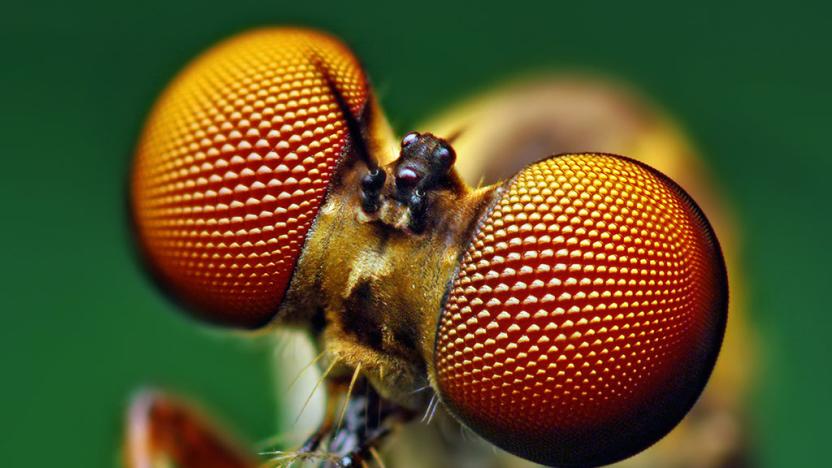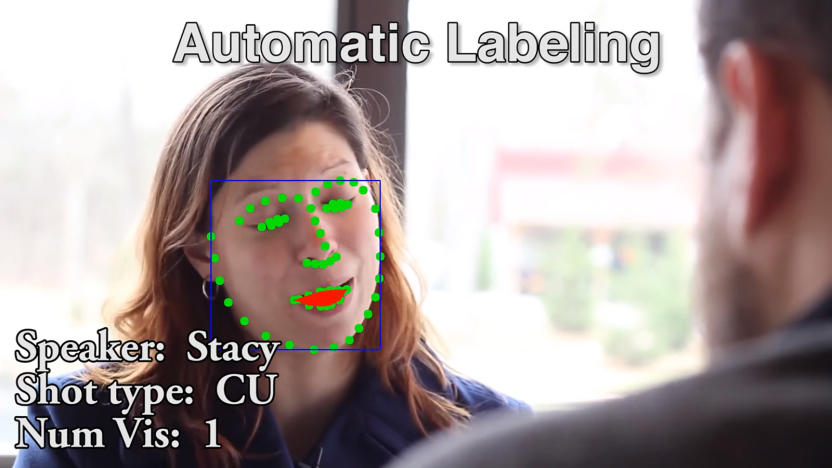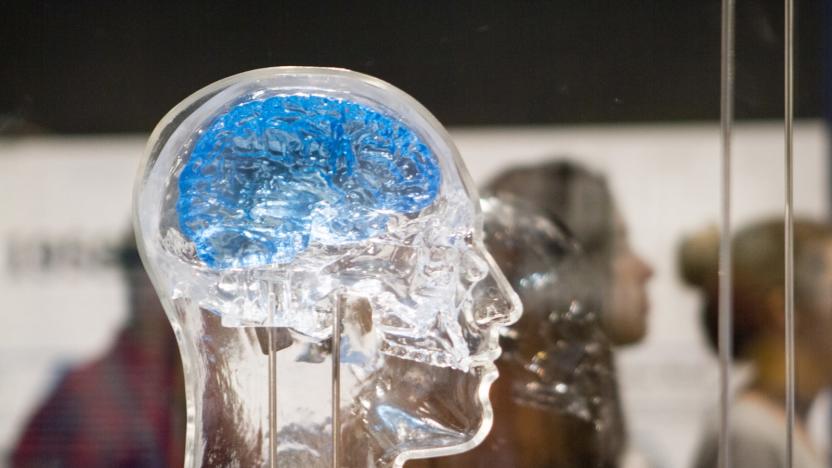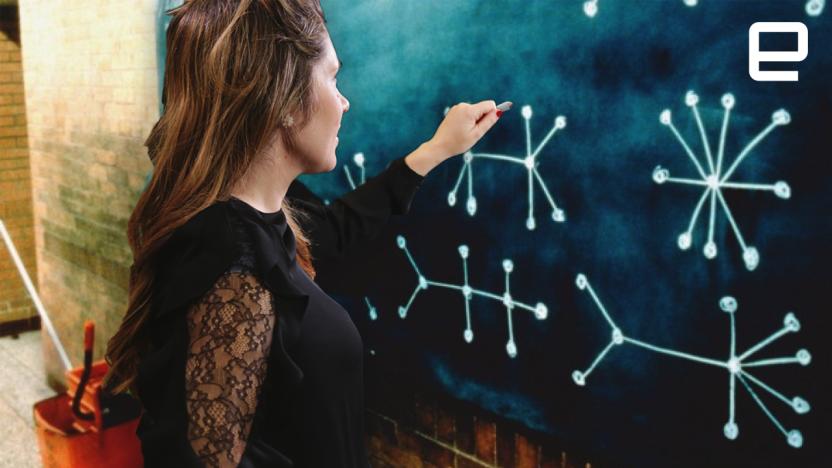stanford
Latest

Stanford toughens up cheap solar cells by mimicking insect eyes
While silicon solar panels are already providing electricity for a lot of homes and buildings, it doesn't mean researchers have stopped looking for better and cheaper alternatives. Case in point, a team of Stanford scientists working to make a cheaper photovoltaic mineral called perovskite a viable option for people who want to shift to solar. Perovskites are as efficient as silicon solar cells when it comes to converting sunlight into energy, but they're fragile and can deteriorate easily when exposed to the elements. The team had to find a way to make them more durable -- and they've found inspiration in the compound eyes of insects.

AI creates fictional scenes out of real-life photos
AI's not quite ready to build photorealistic worlds on its own. But it's getting pretty close.

Super-thin semiconductors delay the 'death' of silicon
Silicon has been the backbone of processors for decades, but it's rapidly approaching its physical limits: making a chip on a process smaller than 5 nanometers is usually impossible without introducing problems. How is Moore's Law for chip complexity going to survive? Stanford researchers have a solution: augment it with materials that outdo silicon where it counts. They've pinpointed two semiconductors, hafnium diselenide and zirconium diselenide, that can be made extremely thin (just three atoms thick) while self-insulating far more effectively than silicon. You could get transistors that are 10 times smaller than the smallest you get from silicon alone -- 5nm chips would seem bloated compared to what's possible with these diselenides.

High-tech solutions top the list in the fight against eye disease
"The eyes are the window to the soul," the adage goes, but these days our eyes could be better compared to our ethernet connection to the world. According to a 2006 study conducted by the University of Pennsylvania, the human retina is capable of transmitting 10 million bits of information per second. But for as potent as our visual capabilities are, there's a whole lot that can go wrong with the human eye. Cataracts, glaucoma and age-related macular degeneration (AMD) are three of the leading causes of blindness the world over. Though we may not have robotic ocular prosthetics just yet, a number of recent ophthalmological advancements will help keep the blinds over those windows from being lowered.

Algorithm spots abnormal heart rhythms with doctor-like accuracy
While not all arrhythmias are fatal or even dangerous, it's still a cause for concern. Some, after all, could cause heart failure and cardiac arrest, and a lot of people with abnormal heart rhythms don't even show symptoms. A team of researchers from Stanford University might have found a way to effectively diagnose the condition even if a person isn't exhibiting symptoms and even without a doctor. They've developed an algorithm that can detect 14 types of arrhythmia -- they also claim that based on their tests, it can perform "better than trained cardiologists."

Prototype '3D' chip from MIT could eliminate memory bottlenecks
Future CPUs will have to deal with growing amounts of data, but all too often they are slowed down by bandwidth issues between the processor and RAM. A prototype chip built by researchers at Stanford and MIT can solve the problem by sandwiching the memory, processor and even sensors all into one unit. While current chips are made of silicon, the prototype processor is made of graphene carbon nanotubes, with resistive RAM (RRAM) layered over it.

Stanford study uses big data to highlight racial biases in policing
A group at Stanford University has taken on the issue of racial bias in law enforcement with an ongoing study called the Open Policing Project. The researchers have also created a website that makes not only their findings available, but all of their data and analysis coding as well.

AI film editor can cut scenes in seconds to suit your style
AI has won at Go and done a few other cool things, but so far it's been mighty unimpressive at harder tasks like customers service, Twitter engagement and script writing. However, a new algorithm from researchers at Stanford and Adobe has shown it's pretty damn good at video dialogue editing, something that requires artistry, skill and considerable time. The bot not only removes the drudgery, but can edit clips using multiple film styles to suit the project.

The future of a cleaner, cheaper power grid is batteries
On the southern edge of the island of Kauaʻi sits an unsightly diesel power plant. The rust-covered smokestacks (a by-product of being next to the ocean) that emit a mechanical engine drone are a stark contrast to the serene beauty of the rest of the Hawaiian island. For decades this smoke-belching eyesore was the main source of electricity for Kauaʻi. But now it's being overtaken by renewable sources -- one that's made possible by batteries like those being built by Tesla.

ICYMI: Submersible sticky situations and elongating elastomer electrodes
Today on In Case You Missed It: Researchers from Purdue University and the Office of Naval Research teamed up to develop a new kind of glue that even works underwater. The synthetic compound is derived from proteins used by muscles to keep themselves attached to rocks. The man-made adhesive is 17 times stronger than its source material and could one day hold US Navy ships together. We also take a look at a stretchable electrode developed at Stanford University. Leveraging the same kind of molecule that commercial kitchens use to thicken soups, the Stanford researchers were able to develop an electrical conductor that can be easily deformed while actually conducting better as it is stretched. And finally, this is what happens when you hook a watermelon up to a car battery. As always, please share any interesting tech or science videos you find by using the #ICYMI hashtag on Twitter for @mskerryd.

Artificial synapse could be key to brain-like computing
If you're going to craft brain-like computers, it stands to reason that you'd want to replicate brain-like behavior right down to the smallest elements, doesn't it? Sure enough, researchers have managed just that. They've developed an artificial synapse that imitates the real thing by both learning and remembering whenever electrical signals cross -- most previous attempts at this can only manage one action at a time. You only have to discharge and recharge the synapse at specific voltages to program it, and it promises to be far more power-efficient than conventional approaches to brain-like operation.

Scientists are making VR displays that match your eyesight
One of the reasons why VR games and experiences cause headache and nausea is because headsets' displays can't optimize images for your eyes. A team of Stanford scientists seek to change that by developing VR displays that can adjust how images are shown based on your age and any other existing condition. For example, a lot of older people have a harder time focusing on objects close to them than younger people do. "Every person needs a different optical mode to get the best possible experience in VR," lead researcher Gordon Wetzstein explained.

Science shows that anyone could become an online troll
It's easy to dismiss internet trolls as freaks. Surely they weren't raised well, right? Don't be so quick to judge. Cornell and Stanford researchers have published a study suggesting that anyone can engage in trolling if the circumstances are right. In an experiment, the schools skewed the moods of participants by making them complete either very easy or very difficult tests. They were then unleashed on the comment sections of online articles, some of which had trolling posts... and, well, you might have a hunch as to what came next.

Brain mapping could lead to better Parkinson's treatments
When you repair electronics, you frequently test individual parts to see how they affect the whole. Why not try that with the brain? Stanford is doing just that. It developed a technique that fires specific kinds of neurons to map the brain and identify problems caused by Parkinson's and other diseases. The approach first uses optogenetics to make neurons activate in response to light, and follows up with a functional MRI scan to look for the increased blood flow that indicates activity in other brain regions. A computational analysis maps that particular neural circuit and helps determine its role.

AI is nearly as good as humans at identifying skin cancer
If you're worried about the possibility of skin cancer, you might not have to depend solely on the keen eye of a dermatologist to spot signs of trouble. Stanford researchers (including tech luminary Sebastian Thrun) have discovered that a deep learning algorithm is about as effective as humans at identifying skin cancer. By training an existing Google image recognition algorithm using over 130,000 photos of skin lesions representing 2,000 diseases, the team made an AI system that could detect both different cancers and benign lesions with uncanny accuracy. In early tests, its performance was "at least" 91 percent as good as a hypothetically flawless system.

Online learning improves when you feel like you belong
Completing online courses can be daunting, but that's particularly true if you're in a developing part of the world. It's too easy to feel like you don't belong. Researchers may have a solution, though: giving you activities that help you fit in. An MIT and Stanford study has shown that brief psychological "interventions" can dramatically increase the completion rates for online courses in less developed regions. One of these boosts involved reading testimonials from earlier students who overcame that lack of belonging, while another involved writing a short explanation of how the course reflects and serves their values.

ICYMI: A medical breakthrough inspired by a kids toy
try{document.getElementById("aol-cms-player-1").style.display="none";}catch(e){}Today on In Case You Missed It: Stanford bioengineers created a centrifuge to separate blood and detect disease, all based on whirligigs from childhood. They estimate the blood cell device would cost only 20 cents a piece to make, and since it's human-powered, could be used all over off-the-grid locations to help diagnose diseases like tuberculosis. The National Science Foundation helped fund research into walking efficiency and the artist who imagined a sad robot dystopia is here. As always, please share any interesting tech or science videos you find by using the #ICYMI hashtag on Twitter for @mskerryd.

Stanford students discover how to build wires like Lego
Scientists at Stanford University and the Department of Energy have developed a way to make incredibly thin wires with extraordinary properties. Using diamondoids -- the smallest possible pieces of diamond -- the researchers have been able to build electrical wires that measure just three atoms wide. Thanks to their microscopic size, these remarkably thin wires have the potential to be used to make fabric that conducts electricity without energy loss.

ICYMI: Physicists just cracked a big anti-matter hurdle
Today on In Case You Missed It: CERN scientists announced they were able to measure anti-matter on the optical spectrum after a full 20 years of trying. This could not only help us understand the universe better but probably solve the mystery of the aliens everywhere meme-- kidding! That guy is unexplainable. Meanwhile Stanford scientists were able to see how starfish larvae move through water, creating vortices to both swim and move food closer to their mouths, something that had previously been unknown. If you're looking for a laugh, feel free to check out synthesizer bike guy, round two. As always, please share any interesting tech or science videos you find by using the #ICYMI hashtag on Twitter for @mskerryd.

ICYMI: Birds the magical flying machines
try{document.getElementById("aol-cms-player-1").style.display="none";}catch(e){}Today on In Case You Missed It: There are three main theories of flight and it turns out, Stanford has poked holes in them by simply training a mini parrot to wear tiny safety goggles, then fly through a laser sheet. The video is more adorable than you could probably imagine so feel free to get your fix here. Meanwhile, NASA's new jet engine could make waves in both increased fuel efficiency and plane design since it relies on slower-moving air currents. The Arctic Sea Ice video is here, but the must-watch in this scenario is the Weather Channel take-down of Breitbart News. The video of the lawn picture maker is here. As always, please share any interesting tech or science videos you find by using the #ICYMI hashtag on Twitter for @mskerryd.








